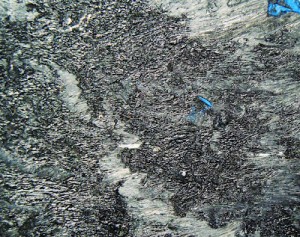Waste Not, Want Not
Adversity brings out the best and the worst in people. In some parts of the country, the theft of aluminum signs has risen dramatically during this protracted recession. Is it any surprise? With rising raw material costs, aluminum is valuable as scrap. To thwart criminals, traffic sign manufacturers are replacing aluminum signs with sign blanks made from e-waste plastic. The crooks have discovered that there is no money in waste plastic.
If you have never heard of e-waste plastic, it refers to post-consumer plastic from used electronic products, such as TV and computer housings, cell phones and old printer cartridges. Each year about 30 million tons of e-plastic waste or 12% of the total mass of solid waste ends up in landfills.

Image Microsystems in Austin, TX recycles plastic from TV and computer housings, cell phones and spent inkjet printer cartridges.
Recycling this dirty plastic is obviously ecologically responsible. It’s also economically sound. Each year more than 10 million traffic signs must be replaced. Recycled plastic is about 30% less costly than aluminum. It’s also more durable than aluminum, providing longer service life.
Structurally, the recycled plastic is just as strong if not stronger than aluminum or plywood. If you bend an aluminum sign too far, it’s bent for good. Recycled e-waste signs are more resilient and spring back to their original shape. That’s great news in parts of the country that experience high winds, such as Texas and the Windy City.
E-waste plastic is also more dimensionally stable. That means that the plastic does not expand and contract as other plastics do. Because of its stability, sign blanks will not buckle and will not warp in the blistering heat of the summer sun.

E-waste plastic is an excellent alternative as a sign substrate for traffic signs, real estate signs and construction site signage.
The rigid, rugged sign material is an excellent sign substrate for reflective sheeting. Prior to application, the surface should be prepped with isopropyl alcohol. Adhesion of most reflective films to the e-waste plastic is similar to the adhesion to aluminum sign blanks.
While e-waste plastic sheet is a cost-effective alternative to aluminum for street and highway signs, it is also a good substrate for real estate signs and construction site signs. Putting e-waste plastic to good use is also the right thing to do. By recycling this material, we can reduce some of the cost of transporting and disposal of post-consumer plastic in landfills. As the saying goes: waste not, want not.



